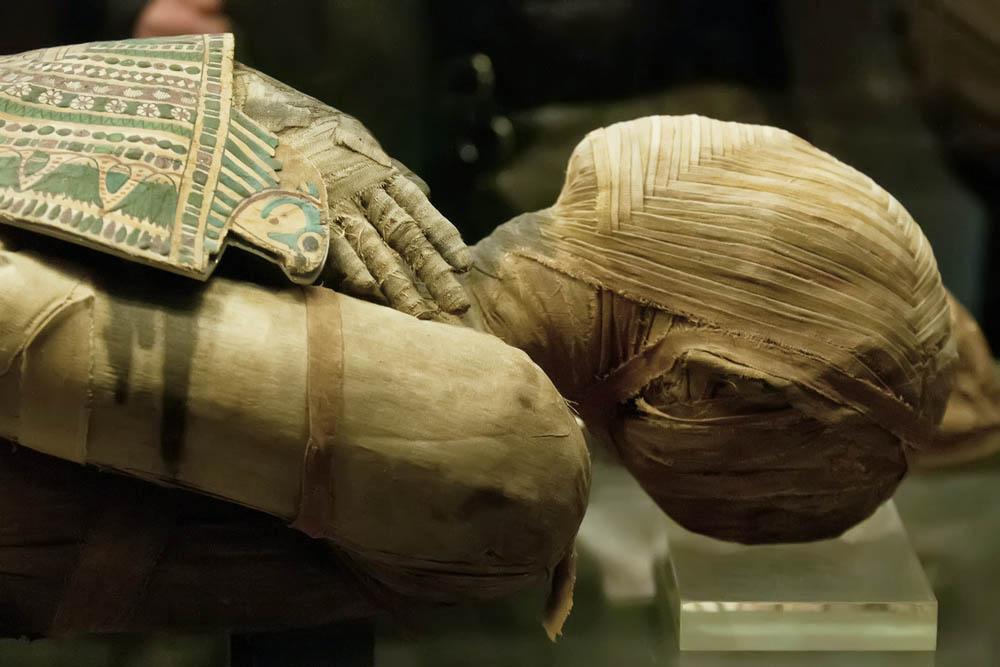Archaeologists are trying to unravel a mystery surrounding the discovery of a 2,000-year-old Egyptian mummy whose skull contains imprints left by the brain, according to a Live Science report. The cranium shows the blood vessels that surround the brain within a membrane known as the meninges and scientists are now trying to piece together the exact process that could have caused such fragile structures to become imprinted into the hard bone of the skull.
“This is the oldest case of mummified vascular prints” that has been found, study co-author Dr. Albert Isidro told Live Science. Until now, there have been only a few anecdotal reports of similar cases.
The skull comes from the mummified remains of a man found in 2010, along with more than 50 others, which had been preserved in bitumen (a viscous oil) mixed with linen. The mummies were found in the Kom al-Ahmar/Sharuna necropolis in the southern area of Hierakonpolis in Egypt, which dates back to between the Late Period and the Ptolemaic Period of ancient Egypt (550–150 BC).
Among the 50, only this one mummy (identified as mummy W19) contained the imprints of blood vessels inside the skull, which scientists have described as reflecting “exquisite anatomical details.” Researchers were even able to identify the middle meningeal artery of the brain.
In a new report about the finding, published in the journal Cortex, the researchers explain that during the mummification process, the brain was removed, and the inside of the skull was cleaned and filled with preservative substances. The brain tissue does not remain intact after these procedures, so something unique must have occurred in this case.
They found that the blood vessels in the membrane surrounding the brain became cast into the layer of the preservative substances, and this then became imprinted into the skull bone.
“The conditions in this case must have been quite extraordinary,” the researchers said. “We can speculate that something special happened in individual W19 just at the moment of bitumen insertion” into the skull.
Dr Isidro said that they still do not understand exactly what could have happened to cause the rare and unusual feature in the skull. One theory they have proposed is that the general conditions, such as the temperature or the acidity of the preservative were, for some reason, different for W19 than for the other fifty mummies found in the same necropolis.
Republished with permission. Read the original at Ancient Origins.
Visit the Epoch Times Beyond Science page on Facebook, and subscribe to the Beyond Science newsletter to continue exploring the new frontiers of science!
*Image of an Egyptian mummy via Shutterstock





